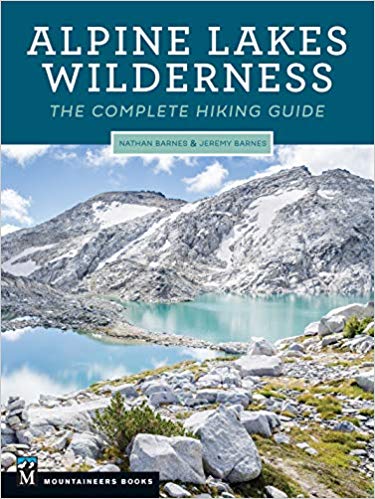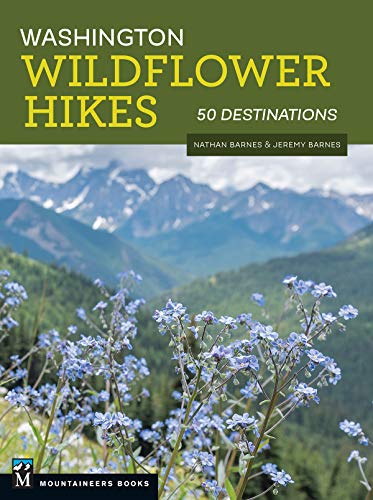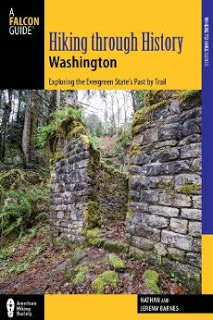Mirror, Cottonwood, and Twilight Lakes
Follow this route out to the lovely Mirror Lake before connecting with the Pacific Crest Trail and heading out to two remote lakes near Yakima Pass.
Total Distance: 5.0 miles
Total Ascent: 1250ft (650ft in; 600ft out)
Highest Point: 4200ft
Total Ascent: 1250ft (650ft in; 600ft out)
Highest Point: 4200ft
To get there, take I-90 to Exit 62 and head right. You’ll pass over the Yakima River and at just over a mile from I-90 take a right on Forest Road 5480. Continue down the road following signs directing you toward Lost Lake and trail #1302. The road will take you up and around Lost Lake and past various hunters’ huts before turning extremely rough about seven miles from the freeway. There are a couple of turnouts to park at here. The trail begins a 1/2 mile further up the road. View Google Directions >>
The Mirror Lake Trail #1302 begins off Forest Road 5810, momentarily traversing the lingering scars of logging activities circa the 1970s. Shortly however, respite is found in the quiet embrace of forests of fir and pine. The trail is well trodden and easy to follow; however, there are no formal bridges over any of the streams or creeks you encounter. This should not pose much of a problem during the drier months, but rains and snowmelt can make for swollen streams that are tricky to navigate. Creative use of rocks and fallen snags will convey you across, but might make things complicated for young hikers.
Placid Cottonwood Lake is your first destination, replete with campsites for PCT travelers along shores surrounded by the ridges of Tinkham Peak. A nice stopping point perhaps, but Mirror Lake lies less than a mile beyond and easily outclasses Cottonwood Lake. Continue on past the junction leading up to Tinkham and Silver Peaks and down to the lake. Aptly named, the crags of Tinkham are reflected on the glassy surface of Mirror Lake. Find your own little nook within the trees to soak in an alpine setting. Wander to the end of the lake to find a makeshift beach and perhaps the best vantage point for appreciating the view and having a snack.
From here you can call it a day or press on to Twilight Lake and Yakima Pass. One word of caution: once beyond the immediate vicinity of Mirror Lake, the terrain becomes undeniably ugly. Unapologetically logged, the clear-cut landscape feels used up. You’ll quickly encounter the unofficially named Mirror Lake Falls offering a cheerful break to the otherwise dreary scene. Without too much fanfare, you’ll arrive at Twilight Lake and Yakima Pass. Small and surrounded by marsh, the lake itself is a bit of a letdown after Mirror, and if this is as far as you’re going, you may want to save yourself the trip.
An extensive trip down forest roads to get to the Mirror Lake trailhead makes a hike solely to the lake more trouble than it’s worth. One appeal would be the easy access for little ones to see and experience the feeling of remoteness that Mirror Lake manages to convey, but the difficult fording of a couple of streams might preclude getting the tykes all the way to Mirror. For most hikers, we recommend including this on a trip up to Silver Peak or a longer trip out to Stampede Pass because it’s not so spectacular as to warrant the miles of potholes for its own sake.
Placid Cottonwood Lake is your first destination, replete with campsites for PCT travelers along shores surrounded by the ridges of Tinkham Peak. A nice stopping point perhaps, but Mirror Lake lies less than a mile beyond and easily outclasses Cottonwood Lake. Continue on past the junction leading up to Tinkham and Silver Peaks and down to the lake. Aptly named, the crags of Tinkham are reflected on the glassy surface of Mirror Lake. Find your own little nook within the trees to soak in an alpine setting. Wander to the end of the lake to find a makeshift beach and perhaps the best vantage point for appreciating the view and having a snack.
From here you can call it a day or press on to Twilight Lake and Yakima Pass. One word of caution: once beyond the immediate vicinity of Mirror Lake, the terrain becomes undeniably ugly. Unapologetically logged, the clear-cut landscape feels used up. You’ll quickly encounter the unofficially named Mirror Lake Falls offering a cheerful break to the otherwise dreary scene. Without too much fanfare, you’ll arrive at Twilight Lake and Yakima Pass. Small and surrounded by marsh, the lake itself is a bit of a letdown after Mirror, and if this is as far as you’re going, you may want to save yourself the trip.
An extensive trip down forest roads to get to the Mirror Lake trailhead makes a hike solely to the lake more trouble than it’s worth. One appeal would be the easy access for little ones to see and experience the feeling of remoteness that Mirror Lake manages to convey, but the difficult fording of a couple of streams might preclude getting the tykes all the way to Mirror. For most hikers, we recommend including this on a trip up to Silver Peak or a longer trip out to Stampede Pass because it’s not so spectacular as to warrant the miles of potholes for its own sake.
History
It may not look like much now, but Yakima Pass was once a busy thoroughfare. In addition to Snoqualmie Pass, Yakima Pass was heavily utilized by Native Americans as a means of crossing the Cascades. Snoqualmie was mainly used for foot traffic, while Yakima, with lighter snow accumulations, was preferred for horse traffic. As Europeans made their way west, Yakima Pass was a popular trade route for the Hudson Bay Company and early explorers. Until 1856 both passes were often referred to as “Snoqualmie Pass,” causing a great deal of confusion for those attempting to find a rail route through the mountains. In 1853 the area was surveyed by George McClellan of McClellan Butte fame, who deemed the real Snoqualmie Pass “impassable” and recommended Yakima Pass as an option. The next year in 1854, Albert Tinkham went through Yakima Pass as well, never finding the lower Snoqualmie pass, but did enough work in the area to have a mountain named after him. It wasn’t until 1856 that J.H.H. VanBokkelen managed to locate and survey the pass we use today.
Nearby hikes
Similar Difficulty
Similar Features












